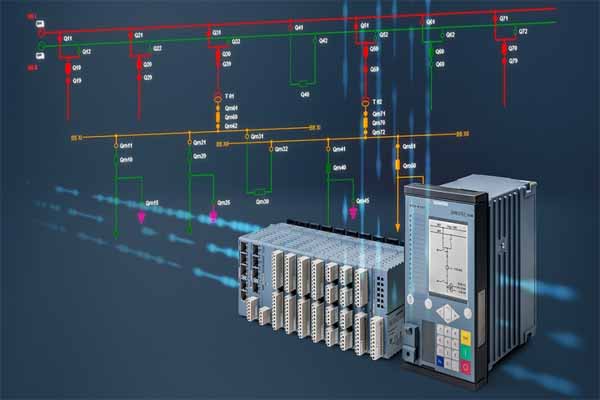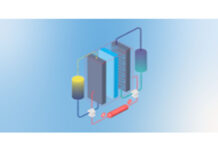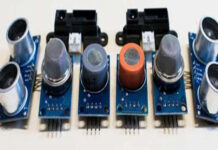The global substation automation market is expected to be valued at US$ 29.12 Billion in 2022. With the increasing demand for electric and hybrid vehicles, coupled with the rising use of digital technology to improve grid efficiency in smart cities, the overall demand for substation automation is projected to grow at a CAGR of 6.7% between 2022 and 2032, totaling around US$ 55.69 Billion by 2032.
Substation automation is a method of using data from intelligent electronic devices. It refers to controlling and automating the capabilities within the substation and controlling power systems devices through commands from remote users. To make the electricity substations automated, the use of equipment such as specific software, special sensors, and equipment that facilitate two-way communication is entailed.
In addition, there is the use of intelligent electronic devices such as protective relays, programmable logical control, and a digital transducer. Such type of equipment helps in the monitoring and controlling of substation equipment. Also, with the help of such equipment, the incidences and duration of power outages are reduced.
The key market driver of this market is to reduce human intervention and improve the operating efficiency of the system. Also, increasing developments in SCADA and communication technologies along with rising demand for renewable energy projects, drive the market growth.
Which Drivers Underpin Substation Automation Industry Expansion?
Increasing Investments in Smart Grid Infrastructure Development to Fuel the Market Growth
Substation automation assists with reducing operational as well as maintenance costs and increase plant productivity using enhanced technologies. It also ensures high performance, reliability, and safety of electrical power network performing interlocking and smart load shedding functions.
Smart grids can reduce energy losses during transmission and distribution, improve reliability and productivity, and manage energy demand smartly and cost-effectively.
Considering all these benefits, heavy investments are being made for the development of smart grids across the world. For instance, in May 2018, Natural Resource Canada announced an investment of USD 949,000 for a next-generation smart grid project.
The grid project focuses on promoting the adoption of renewable sources of energy and the implementation of technology to integrate new sources of clean energy without compromising the stability and reliability of existing grids.
The Government of Germany is making multiple initiatives to completely digitalize various operations in the railways sector; for example, the automatic operation of trains on the mainline network using automated substations. According to the International Railway Journal, the Government of Germany has invested USD 80 million in developing digital applications to increase the network capacity.
Huge Prospects for Substation Automation to Augment the Market Growth
Solar and wind are currently the mainstream options in the power sector, with most countries generating more than 20% of their electricity using solar and wind energy sources. According to the International Energy Agency (IEA), the share of renewable sources in world electricity generation reached 25% in 2019.
By 2050, renewable power will be able to provide the bulk of global power demand, which would be approximately 86%. Companies across the world are focusing on investing into sustainable energy infrastructure than that of in fossil fuels.
Increase in Population and the Subsequent Rise in Electricity Demand boding well for Substation Automation Expansion
Electricity has gained significant importance in daily life, similar to air and water. Residential, commercial, and industrial users, each, account for roughly one-third of the nation’s electricity use.
On an average, the biggest single uses of electricity in the residential sector are space heating and cooling (air conditioning), lighting, water heating, space heating, home appliances and electronics. Demand for electricity in the residential sector increases on hot summer afternoons due to rise in use of ACs, fans, and coolers.
The commercial sector comprises government organizations, service-providing facilities and equipment, and other public and private entities. Usually, the substantial single uses of electricity in the commercial sector are lighting, heating, ventilation, and air cooling & conditioning.
Electricity requirement in the commercial areas rise during operating business hours, and it may reduce substantially on nights and weekends. Electricity use in the industrial sector generally does not fluctuate through the day or year, as in the case of residential and commercial sectors, particularly at manufacturing facilities that operate round-the-clock.
Which Factors Are Limiting The Growth Of Substation Automation Market?
Slowdown in Power Generation Industry to Limit the Market Growth
The COVID-19 pandemic had slowed the growth of the power generation industry in 2020. Electricity demand was depressed by 20% during periods of full lockdown in several countries. With this decrease in power demand, there has been very few investments from utilities for automating substations since 2020.
Since COVID-19 has delayed deliveries from China, renewable energy companies are not able to comply with deadlines for equipment installation. For instance, in India alone, 3,000 MW of solar and wind energy projects were delayed due to the lockdown.
BYD (China), the world’s leading producer of rechargeable batteries, was unable to test new models of rechargeable batteries due to the pandemic, and this has led to a reduction in delivery volumes of rechargeable batteries in the European market.
High Installation Cost of IEDs in Substations to act a Market Restraint
The initial phase of automating the substation is capital-intensive, which may restrain the growth of the global substation automation market. The increasing use of advanced technologies such as microprocessor and service-oriented architecture (SOA) and the rising requirement to embed several IEDs in substations have increased the purchase costs of these substations.
Moreover, an effective deployment of smart substations requires strong coordination across customary organizational boundaries, significant process change, and rigorous governance. High investments for fruitful deployment of smart substations could add to the governments’ economic burden. High operational and maintenance costs after the deployment are also a big concern for utility providers.















